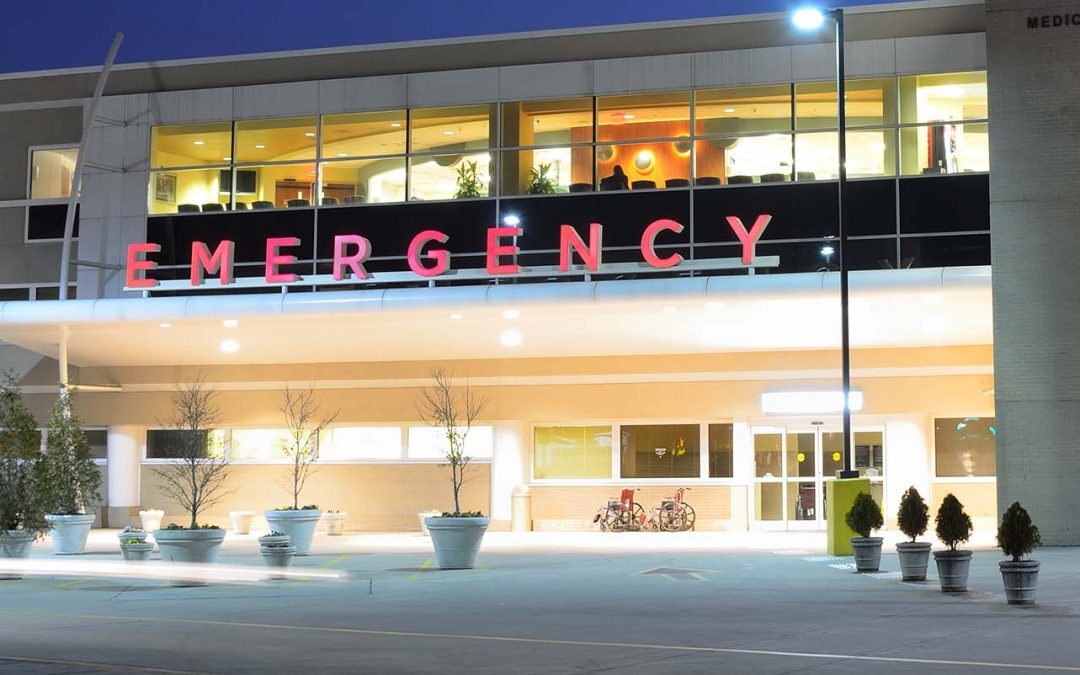If you or a loved one is in distress, confused, or a risk to themselves or others, it’s not always clear what to do or where to go for help. The person in crisis may not be in physical pain, but sometimes the lack thereof can make the event more frightening. In many instances, mental health patients in the ER are brought for a mental health crisis — in fact, psychiatric admissions are at an all-time high.
Can You Go to the ER for Mental Health Treatment?
The general rule of thumb for taking a trip to the emergency room is to go when you are facing life- or limb-threatening situations. In the case of mental health, situations of suicidal ideation, homicidal thoughts, self-harm, signs of psychosis, confusion, uncontrolled mania, and hallucinations or delusions also warrant a trip to the ER.
More patients are increasingly visiting the emergency room for mental health needs.
Did you know that 6% of all adult ED visits and 7% of pediatric ED visits are for mental health issues?
While there are numerous reasons to go to the ER for mental health treatment, there are certain limitations of mental health-specific care in these settings. First, emergency rooms can be overwhelming and overstimulating. With bustling activity, bright lights, and lots of noise, the ER can be a chaotic environment that’s not ideal for mental health patients. Additionally, there are often long wait times and hold times, and there may not be instant access to a psychiatrist available.
Most importantly, an ER visit for mental health could pose potential safety risks to the patient, staff, and other patients, depending on the cause of the emergency visit. There are many items in the emergency department that can pose self-harm or hanging risk, such as call cords and lanyards, among others. Unlike in-patient facilities that are designed specifically for mental health patients and those at high risk of self-harm or elopement, the ED may not be armed with the same level of safety precautions.

What to Expect in an Emergency Room Mental Health Assessment
If a patient is heading to the ED for a mental health emergency, the process may look a lot like the following:
- Check in and fill out paperwork.
- Be prepared for Covid-19 precautions, including mask-wearing requirements and visitor restrictions.
- Expect a brief initial assessment on the acute condition and level of urgency, with an estimate on how long of a wait is to be expected.
- There may be a drug screen or toxicology report, as acute intoxication is the primary reason for increased agitation and violence, according to The Psychiatric Times.
- The psychiatric evaluation is the primary part of a mental health ER visit. This mental health assessment will likely cover a face-to-face interview, first assessing why the patient is there and the medical issues of immediate concern.
- Collateral contact will likely be made with family members and friends, and other professionals like ED staff, outpatient therapists or care coordinators will be consulted.
- After the evaluation is complete, medical staff will determine an appropriate treatment plan. Treatment could include medication, crisis counseling, a referral for inpatient treatment, hospital admission, or another recommendation.
Why are Mental Health Visits to the ER Increasing?
Over the last several years, mental health ER visits have steadily increased. While the pandemic has accelerated that trend, there are several factors that have led to more ER visits for mental health issues, such as the following:
- Patients not receiving proactive treatment due to lack of insurance
- Difficulty to find behavioral healthcare in-network
- Psychiatrist shortage
- More people seeking treatment since awareness of mental health problems has increased
- Lack of inpatient beds

What to do When You or a Loved One is Having a Mental Health Emergency
If you or a loved one is having a mental health emergency, the first thing to do is to assess the severity of the crisis to determine if the ER is the right place to go. If the emergency is life-threatening, and the patient is experiencing psychosis or is a danger to themself or others, the ER is likely the best place to go.
There are other types of crisis programs and mental health resources to turn to, as well, including:
- Hotlines like the National Suicide Prevention Hotline
- Walk-in clinics or psychiatric urgent care centers
- Crisis stabilization units
- Psychiatric hospitals
Patient safety is of the utmost importance during a mental health emergency — patients in crisis need proper environments with regular observations in order to ensure their wellbeing. ObservSMART is a proximity-based compliance technology that prioritizes patient checks and validates they are being completed. It was designed to ensure mental health ER patients are properly monitored and protected. After all, accurate observations can make a life-changing difference for patients at risk of self-harm or suicide.
Learn more about patient safety checks, and the difference ObservSMART can make in treating those who are experiencing psychiatric emergencies.

